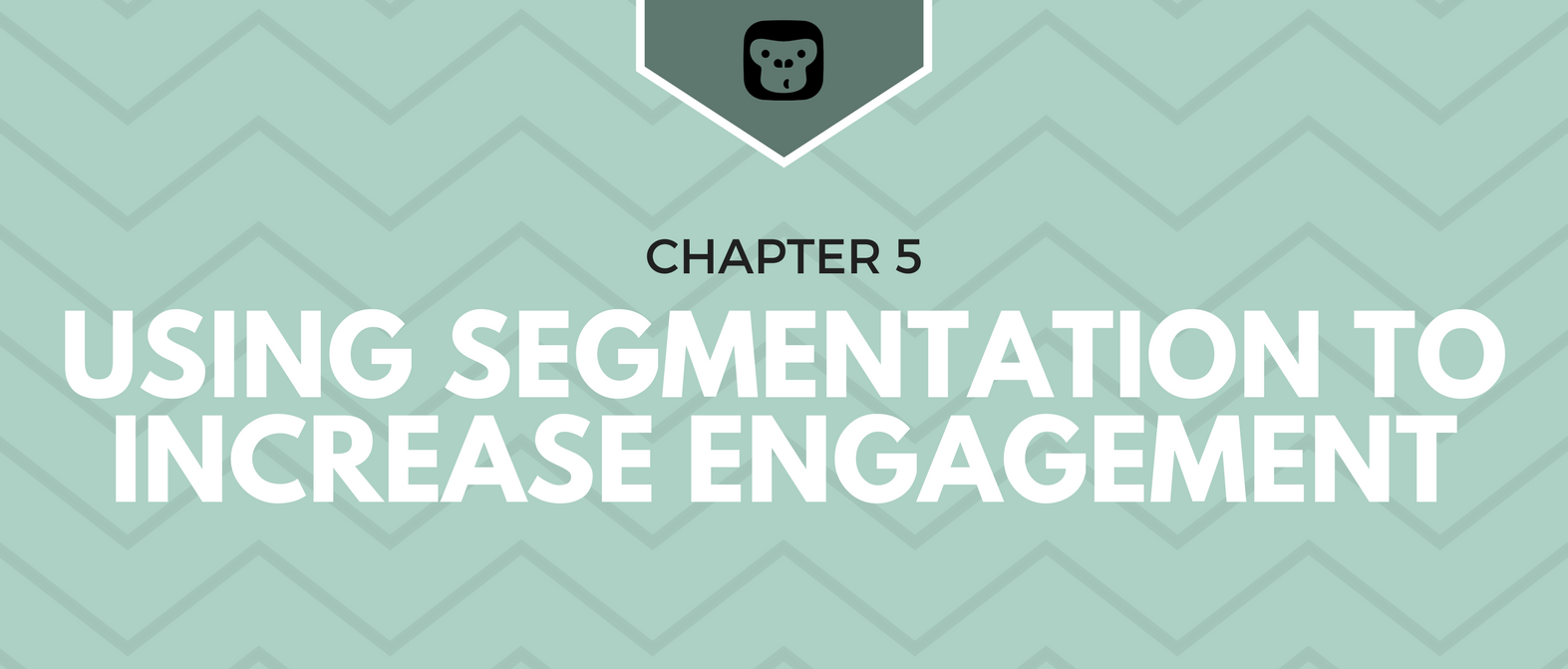Using Segmentation to Increase Engagement
Chapter 5

One of the biggest mistakes small businesses make with their email list is sending the exact same email to everyone, every time.
This is known as taking a shotgun (or batch and blast) approach to email marketing.
This approach poses a problem because not all subscribers on your email list are equally engaged.
On top of that, if you offer services in different categories (for example, pest prevention services vs. treatments for existing pest problems), not every subscriber will be equally interested in both categories.
So the question bears asking, do you want to send the same message to each and every person on your email list?
Of course not.
You want to ensure your emails are as relevant as possible to every subscriber.
Why? Well, according to this study, email campaigns sent to segmented lists and contain relevant content can achieve up to a 760% increase in revenue.
So instead of sending one campaign to everyone, you should segment your lists and send relevant offers and content to each unique segment.
This is taking a sniper approach, and just in case you’re unfamiliar with the term, segmentation is the practice of dividing your email list into targeted groups.
You can differentiate your subscribers in the three following ways: Customer Type, Interest, and Behavior.
When splitting up your email list in this fashion, you…
- Grant yourself the ability to send more targeted communications.
- Ensure your emails are relevant to every one of your subscribers.
- Increase the chances they’ll click-through and make a purchase.
As you can see, segmentation isn’t rocket science, but it is hard work, which is why most people don’t take the time to do it right.
Here’s how you can immediately separate yourself from the pack.
Segmenting your list based on Customer Type
Wouldn’t it be nice if, when people visited your website, they had a tag on them that indicated whether they were new, had visited but never purchased before, have purchased once but never again, or have purchased many times and on a regular basis?
Luckily, many customer relationship management (CRM) and email marketing tools have the ability to apply these tags.
If your software offers this functionality, then you should consider segmenting your email list based on:
- Potential Customers: those who haven’t booked a service yet.
- New Customers: those who have just booked their first service.
- Loyal Customers: those who have booked services on a regular basis.
- Inactive Customers: those who haven’t book a service in a while.
If you do this, you can target your emails in a way that will specifically guide your subscribers through your Conversion Funnel and convert potential customers into new customers, new customers into loyal customers, and loyal customer into raving fans.
Segmenting your list based on Interests
Another way to segment your list, particularly when you offer a range of different services, is to target specific interests.
Why? Because a subscriber’s interactions with your small business are often indicative of their interests.
Sending them all the same campaign isn’t going to work.
This is where interest-based segmentation comes in handy and lets you segment your email list based on:
- Services they clicked on in your email.
- Lead magnets they opted in through.
- Specific services they’ve booked.
By segmenting your campaigns based on interests, you’ll inevitably increase your open and clickthrough rates as well as lower your unsubscribe rate.
Why? Because you’re no longer blasting offers to people who are not interested.
Segmenting your list based on Engagement
It’s a good idea to tailor messages differently based on your subscribers’ activity.
Chances are, you’ve received an email or two with something along the lines of “we’ve missed you” in the message.
These were probably from companies whose emails you haven’t opened in a while.

The reason why you should create a separate segment for inactive subscribers is most email marketing providers are priced according to the size of your subscriber list.
So why shell out cash for subscribers who are not engaging with your business?
Instead, you’ll want to follow this strategy:
- Start by creating a segment of subscribers who have not opened your emails in a certain timeframe, say three or six months.
- Send that segment of people an email asking them to reconfirm their subscription, either to (a) confirm they still want to receive your emails or (b) receive special discounts and valuable resources delivered to their inbox.
- If the subscriber does not confirm their subscription within the next week or two, remove them from your email list.
This strategy is the best way to make sure your email list consists of subscribers who actually want to receive your emails, and coincidentally are the most likely to make purchases.
This will immediately boost the ROI of your email marketing efforts because you’ll be paying less for your email marketing tool and only sending emails to the people who want to receive them most.
Up Next…
6. The Anatomy Of A Perfect Email
Ready to Get Started?
Get all our amazing features and top-rated support, with no credit card required.
